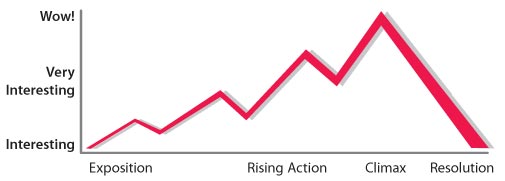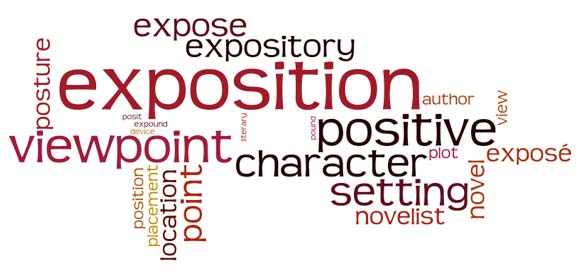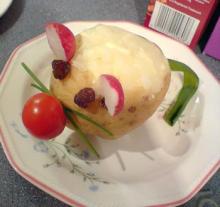Vocabulary for Critical Thinking
Do you know what a mouse potato is? It’s a person who spends too much time staring at a computer screen. Mouse potatoes are the couch potatoes of the 21st century. In fact, Merriam Webster just added the term mouse potato to its august dictionary.
Perhaps you know a few mouse potatoes. Perhaps you are one. But just learning the term mouse potato suddenly makes you think about how much time you spend in front of the computer. That’s the power of vocabulary. It enables thinking. The size of your vocabulary impacts the size of your mental world.
Vocabulary as Inquiry
All right, so you’re saying, “Here we go—vocabulary. It’s so elementary.” Yes, it is—as in the word element: the building blocks of everything. In fact, the origin of the word elementum is the first three letters of the Canaanite alphabet. When we talk about elements, we are reciting our Canaanite ABCs.
Do you see how one word—elementary—has taken us from language arts to science to social studies? Do you see how knowing that elementum is the same as ABCs influences how we think about the Periodic Table of the Elements, about elementary school, about Holmes’s constant insistence that it is “elementary, my dear Watson”?
A word doesn’t have just one meaning. It is freighted with meaning. In its prefixes, roots, and suffixes, each word stores the DNA of human experience.
Vocabulary therefore shouldn’t be rote memorization. It should be inquiry.
How Can I Use Inquiry to Teach Vocabulary?
As with all forms of inquiry, you start by stepping back. You don’t have to know all of the connections for a given word. You might not even know what the word means, so you can discover right along with your students.
Imagine that you are a reading teacher. You want your students to understand plot structure, so you present them with the plot chart. Students’ eyes roll. Great—they have to learn more dusty-dry vocabulary terms like “exposition.” You could provide students with a definition and tell them they have to know the term for the test, but then the vocabulary never gets beyond the most superficial level of thought: memorization.

exposition: the beginning of a story; the part of the story that establishes a setting and introduces characters
Or you can use inquiry to explore the term and get students to think critically about it. Tell your students to work with the word, break it apart, and think about each piece.
Ex. Ask students what that means. They’ll probably say “former,” as in ex-president. They might also say “out,” as in “exit.” So, that’s the first piece, but let’s set it aside and consider the next part.
Position. Have students brainstorm meanings of position—“posture” or “location” or “placement” or “point of view”—or all of these. What does posture have to do with the exposition of a novel? Everything! The author is introducing you to characters, and their postures are critical to understanding them. The author, too, is assuming a kind of literary posture. The exposition lets us know what kind of a story it is going to be. What does location have to do with exposition? Everything! The exposition establishes the location, or setting. How about placement? How about point of view? Then have students strip the word further.
Pose. Students know what that means. A person can strike a pose in order to communicate something—I’m cool or I’m tough or I’m a rock star. A person can also pose objects in specific locations and arrangements. Isn’t that what the author is doing in the exposition of a novel? If pose means to “place” something, then expose must mean to “place it out.” Exposition is like placing the pieces out on a chessboard. It’s like setting up a game.
Exposition. After they take the word apart and examine it, have students put the word back together and guess at its meaning. Only then should the group look at the exact dictionary definition. Then have students find other contexts in which the word has meaning. For example, in music, exposition is the first statement of a melody in sonata form. In social studies, the Columbian Exposition of 1893 was a chance for the nations to “place out” their greatest cultural achievements. Everybody was getting ready for the new millennium—the 20th century—and so that exposition was very much like the beginning of a story.
So, exploring the meaning of exposition gets students to think critically about stories and authors, characters, settings, plots, and literary devices. It also connects the term to many things beyond stories. Treating vocabulary as inquiry makes hundreds of new connections in students’ minds. Instead of teaching just one meaning for one context, you help students explore the vast network of meaning in many contexts.

Mouse Potatoes Unite!
The fact that you are now reading the end of this post shows that you are perhaps at risk of being a mouse potato. But even that term, as trivial as it might seem, overflows with meaning. Mouse potato came from couch potato, just as computer screens evolved from televisions. The computer, of course, is only implied by the word mouse, which itself began as a playful allusion to the little controller with the long tail. And the word potato connects to the round shape of those who get too little exercise—but it also connotes their vegetative state. The connections continue.
Words are doors. They can be opened up, or they can be locked tight. By teaching vocabulary as inquiry, you can help students open the doors to critical thinking and learning.
We want to hear from you! What vocabulary terms are you most interested in? What vocabulary inquiry have you done? Please write your comments below.



Comments
Post new comment